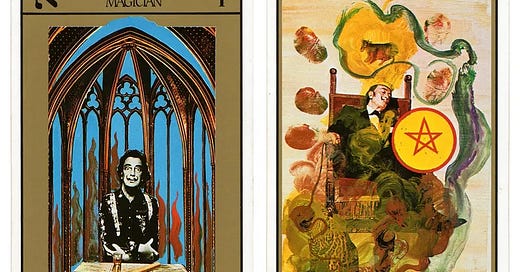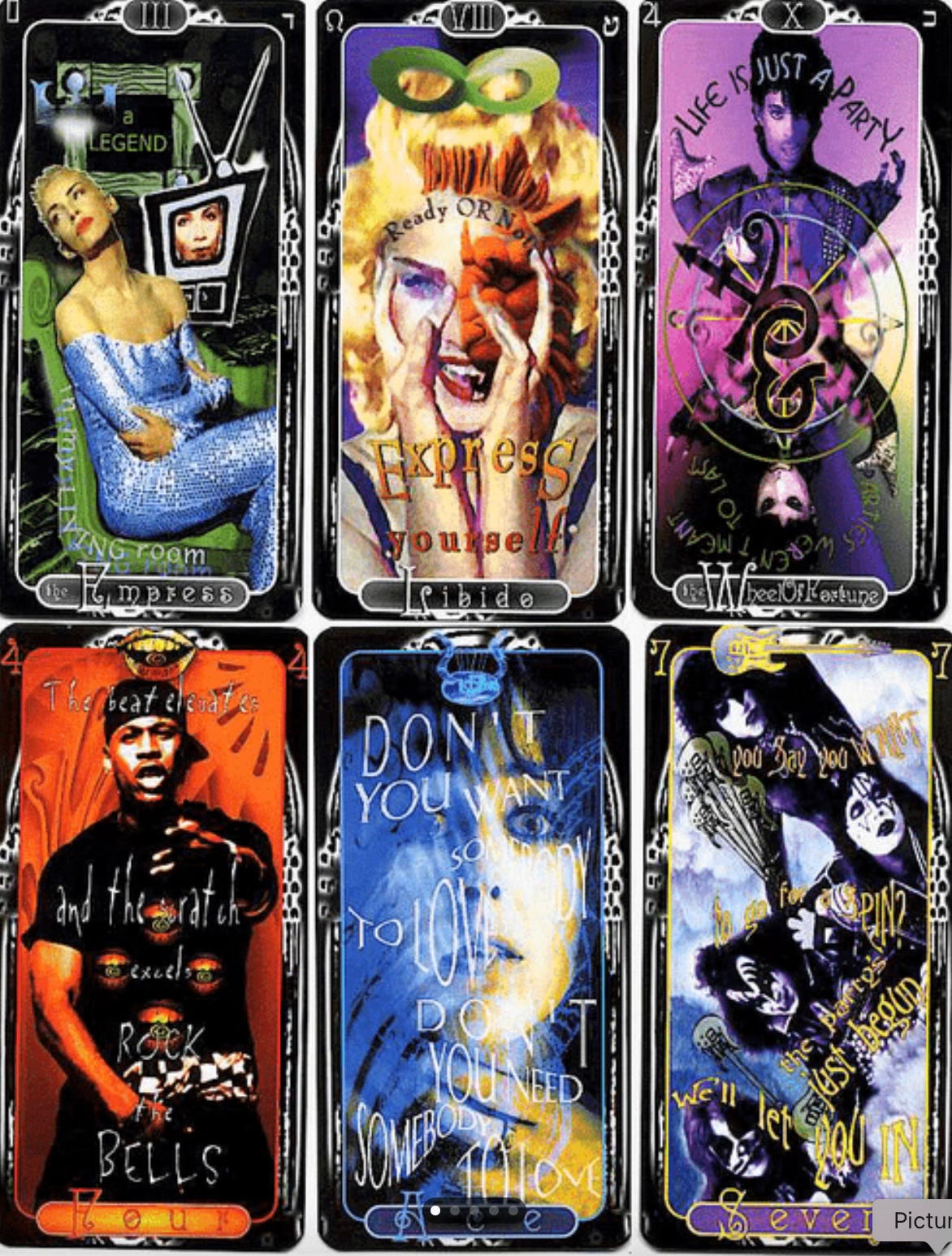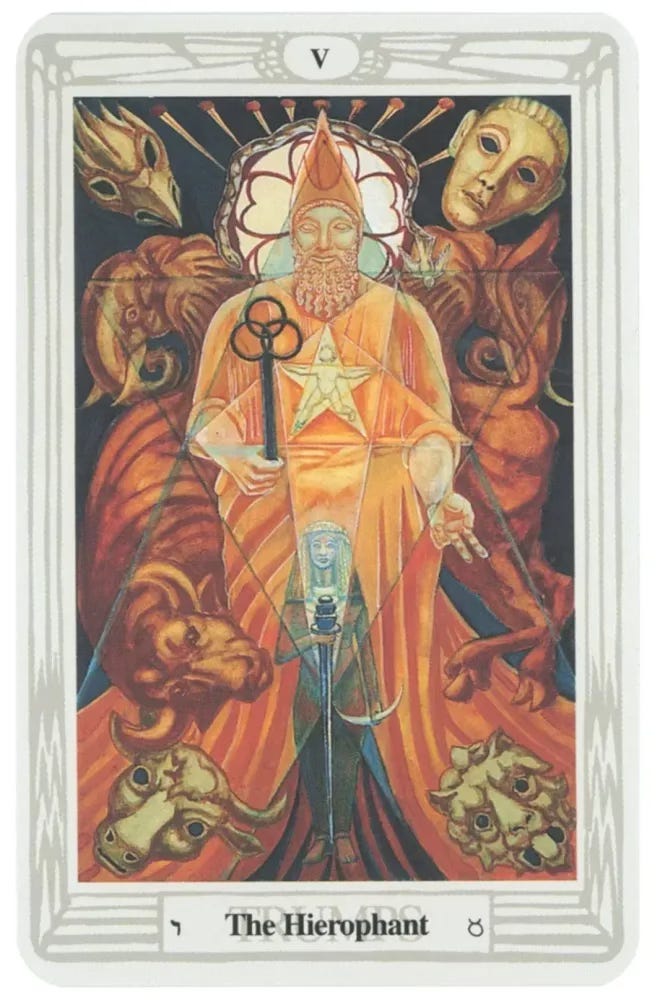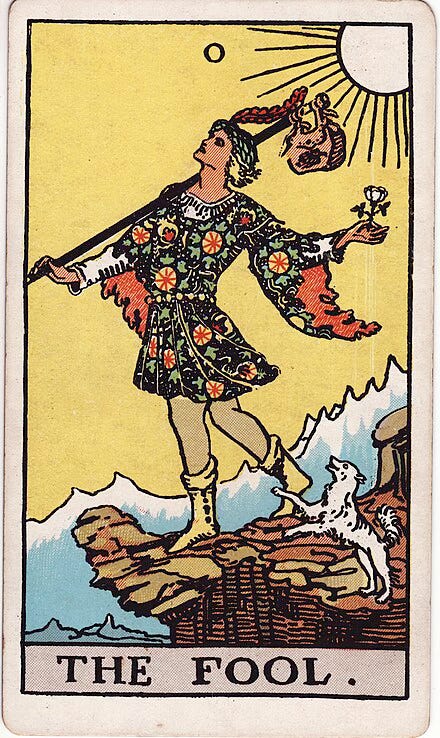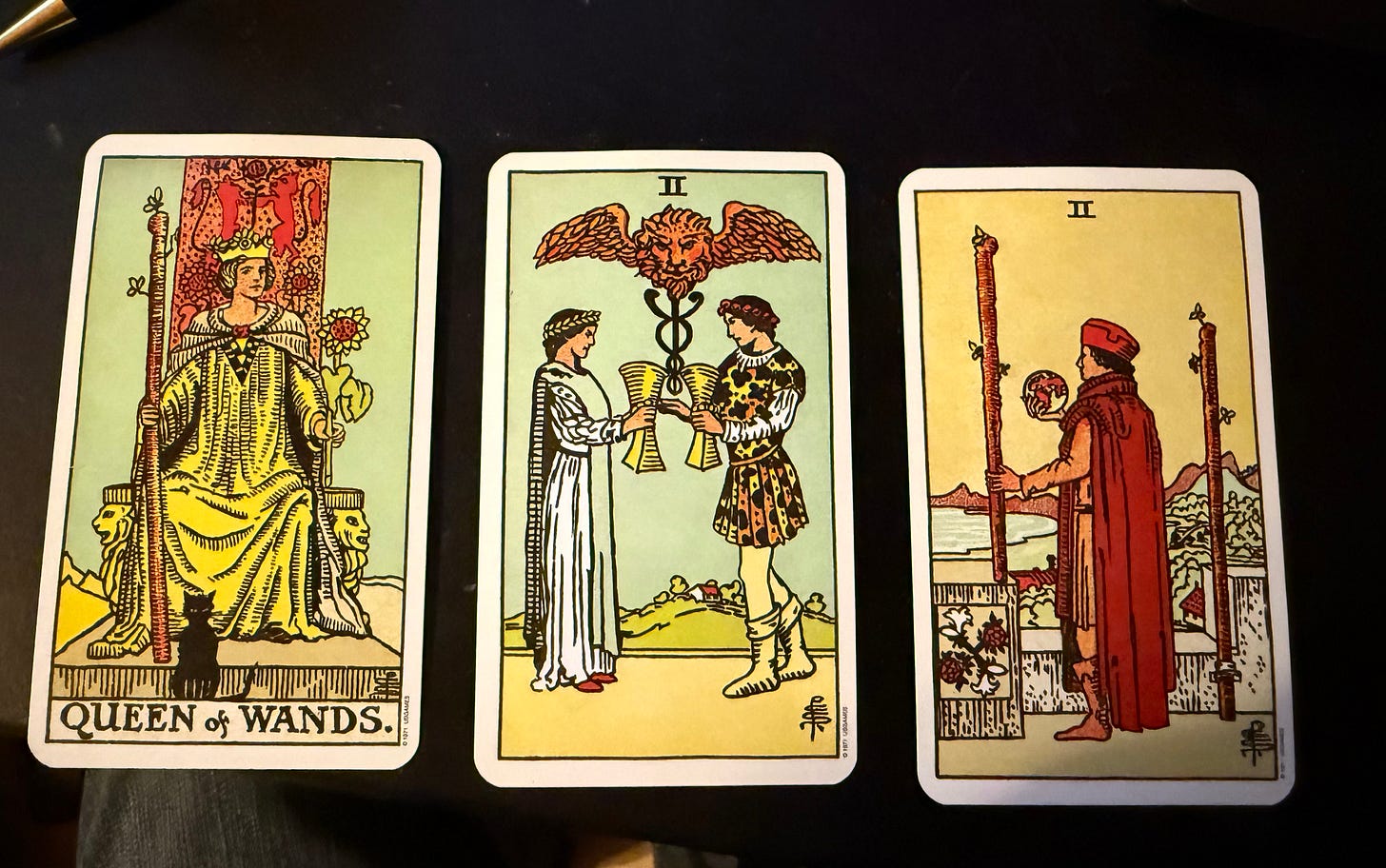About 20 years ago I got heavily into Tarot. Like a lot of interests in my life, once I jump in, I take a huge leap, like The Fool. I accumulated decks, read their included LWBs (little white books), studied dozens of books on Tarot, joined the Aeclectic Tarot forum (where I reviewed a book on the Thoth deck), engaged fellow Tarot lovers from around the world, and slowly but surely became a fairly decent tarot reader. After a few years I owned over 50 decks. Some were what you would expect, the RWS deck, beautifully drawn by Pamela Colman-Smith, the Crowley Thoth deck, daunting, dark, with spellbinding geometric designs by Lady Frieda Harris, and exotic (and expensive) decks like the Salvador Dali deck, and Chris Paradis’s Rock and Roll Tarot, a non-published, promo deck that cost me a small fortune on eBay. Around this time I discovered a weekend retreat at the Omega Center in upstate New York dedicated to all things Tarot. It was being taught by Rachel Pollack and Mary Greer. That would be like taking tennis lessons from Roger Federer and Serena Williams. Pollack wrote the Tarot bible, Seventy-Eight Degrees of Wisdom, while among Greer’s many publications is Tarot For Your Self, the seminal guide to Tarot self-help.
At the end of the three-day seminar, our two instructor-guides asked for questions. I had one. I asked, “So how does it work?” Rachel said, “Damned if I know!” She pointed to the cards lying in front of her and said the cards were just paper and ink. I took away from her answer that the real magic in the cards, their ability to provide guidance, comes from the people who ask the cards their questions, who seek guidance from them.
The genius of the cards lies in their design and content. The Major Arcana of 22 cards are archetypical, laying out the Hero’s Journey, from The Fool’s leap off a cliff without care, to The World, to completion and renewal. In between are the stages of life, the big ones. The Minor Arcana cards, resembling a standard playing deck, tell the story of everyday life, from the creation of an idea (Ace of Swords) to the fulfillment of a life well lived (10 of Pentacles). The Court Cards, always problematic for Tarot readers, are also archetypes, though not quite at the level of the Major Arcana cards. They depict levels of maturity and feminine/masculine manifestations of the elements they represent: water, air, fire and earth.
So how does it work? I’ve always thought of it this way. The 78 cards are like ingredients for a recipe, the recipe of life. You can choose a simple three ingredient spread or go for the more challenging 6, 8 or 10 card spreads. Whatever spread you choose, the cards become not only representations of various situations, but combined with other cards, they become a unique recipe. And it is the reader’s challenge to interpret the ingredients of this particular recipe and figure out what it’s trying to make. Sponge cake? Shrimp linguine? OK, enough with the cooking analogy.
A single card can have a multiple of meanings and those meanings can be positive in one reading, and crippling in another. For example, the Four of Pentacles shows a young man, seated, holding his four pentacles in a most covetous manner. In one reading, that might mean it’s time to stop trying to hold onto a job, a lover, one’s youth, and open up to the world. In another reading, it might serve the querant well to give all their spending a break, or tone down the wild party life, and take a moment for reflection. The larger the spread, the more variables come into play as the multiple of cards must be seen in conjunction with each other. That’s why it has been said umpteen times that The Celtic Cross spread, which is the default spread appearing in the LWB of many decks, including the RWS deck, is a ridiculous way for a novice reader to start. One card, two card, three card spreads are easier to interpret and allow the beginner to get a feel for reading the cards.
There is other magic happening here as well. Intuition plays a huge role, for both querant and reader. Why does the querant pick one card and not another? Why do most readers ask the querant to pick their cards with their left hand? Why is it that as soon as I flip the cards over, I often see the thread without thinking? How come the same cards appear and reappear while others go on holiday? And why do genuine psychics use the cards as a springboard for their special ability? Tarot cards are almost 600 years old. Like astrology, there has to be something to them or why have they travelled so well throughout history?
A Tarot deck is not a fortune-telling device, media representations notwithstanding. They work best as a means for reflection. You could ask, Will I meet a tall, dark stranger? but what difference would it make to you if the answer was yes or no? The answer doesn’t reveal any changes you might need to make in your daily life. It won’t prepare you for anything, even the arrival of the stranger. A better question for the cards might be, What changes do I need to make in my life in order to attract the type of person I’d like to be with? Mary Greer calls the cards a mirror to your soul. They often reflect back to you what you already know, or what you need to know and have suppressed. And yes, sometimes they can be predictive. That’s the fun part.
At the end of that Tarot seminar, Rachel told us that Tarot is not useful for fortune telling, and that those practitioners who claim it is are doing their clients a disservice. That said, she declared that sometimes the cards can be used for fortune telling. She described a spread that her assistant, Zoe, had devised. It was called Do Not Do, a simple three-card spread. The middle card represents the situation, the left card, Not Do, and the right card, Do.
I decided to demo this spread for you. I asked the cards, Should I publish this Tarot piece on my Substack feed? I shuffled and drew these three cards.
The middle card represents the Situation, in this case, the Two of Cups. I’m new to Substack, trying to make connections, build relationships and grow a following. This card depicts my situation well. The Two of Cups represents new relationships, personal or professional. It encourages connecting with others. How perfect.
The card on the left, the Queen of Wands represents Not Do. The Wand Queen is a wonderful person, intense, honest and sincere. She takes the initiative in relationships, and can border on being too pushy, too forward. This card is telling me not to try too hard to make relationships in Substack, to not post solely with the goal of impressing other writers enough to have them follow me or subscribe to my newsletter. If that’s my motivation then maybe I shouldn’t post. (I hope it’s not.)
The card on the right is the Do card, the Two of Wands. This is the card of contemplating choices. There is an urgency to this card, an eagerness to get going, to take risks. The figure holds a globe, plotting his next move. This card is telling me to go for it, post the piece, don’t worry about the reaction of others. And so I have.
I am by no means a Tarot expert but I know a thing or two about the cards. If you have a question, wondering about a deck to buy or a spread to try, give me a holler. And if you’re an adept, I’d love to hear from you too.

